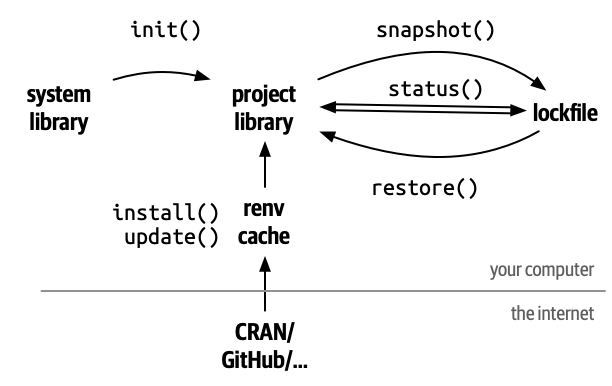The renv package1 helps you create reproducible environments for your R projects. Use renv to make your R projects more isolated, portable and reproducible.
Install the latest version of renv from CRAN with:
install.packages("renv")
Use renv::init() to initialize renv in a new or existing
project. This will set up a project library, containing
all the packages you’re currently using. The packages (and all the
metadata needed to reinstall them) are recorded into a
lockfile, renv.lock, and a
.Rprofile ensures that the library is used every time you
open that project.
As you continue to work on your project, you will install and upgrade
packages, either using install.packages() and
update.packages() or renv::install() and
renv::update(). After you’ve confirmed your code works as
expected, use renv::snapshot() to record the packages and
their sources in the lockfile.
Later, if you need to share your code with someone else or run your
code on new machine, your collaborator (or you) can call
renv::restore() to reinstall the specific package versions
recorded in the lockfile.
If this is your first time using renv, we strongly recommend starting with the Introduction to renv vignette: this will help you understand the most important verbs and nouns of renv.
If you have a question about renv, please first check the FAQ to see whether your question has already been addressed. If it hasn’t, please feel free to ask on the Posit Forum.
If you believe you’ve found a bug in renv, please file a bug (and, if possible, a reproducible example) at https://github.com/rstudio/renv/issues.
Pronounced “R” “env”↩︎